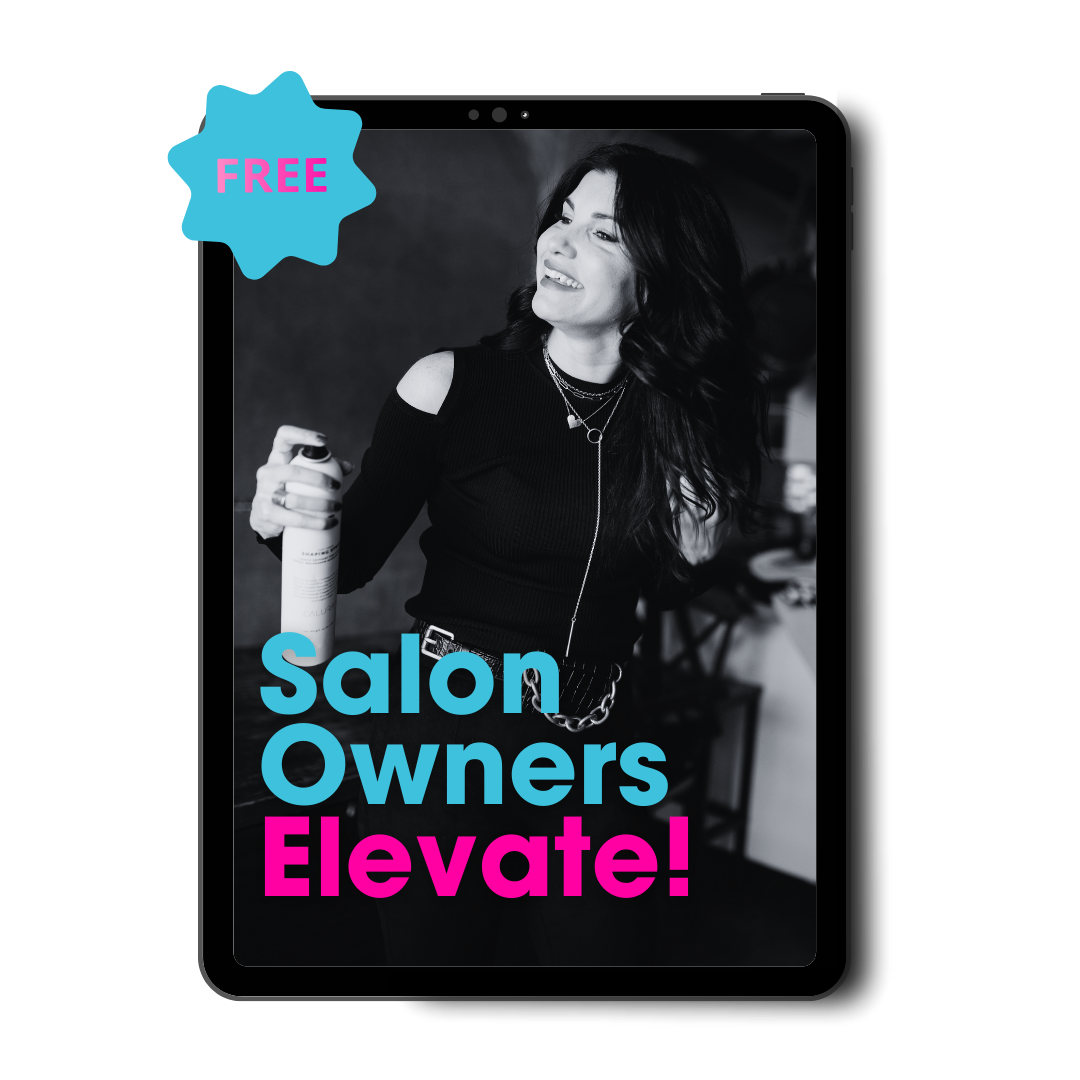HYBRID! Is This The BEST Business Model For YOU?
“Make Decisions based on facts not trends.”
Nina Tulio
LET’S GET DOWN TO BUSINESS!
As the salon industry evolves, so do the business models that drive success. Many salon owners have relied on a commission model, which has been the norm for decades. However, as the industry shifts and suites and rental become more popular, so does the need for a more flexible business structure.
A hybrid business model offers a mix of traditional commission-based W2 employees and the rental based model which allows for greater flexibility and growth opportunities for salon owners and stylists alike. In this blog, we'll explore the pros and cons of the hybrid business model and if it’s the right fit for you.
The first thing I want you to understand is that owning a hybrid salon isn’t easy. Some owners want to make this shift because they think it may make it a lot easier for them to manage. While the rental side of the business is a more hands off approach, keep in mind you are still running a business and even more so. You are running two business models under 1 roof. In order for this to work. There has to be a clear foundation and solid systems in place first and clear communication between you, your W2 employees, and rental stylists. Everyone has to be very clear on the expectations on both sides.
PROS of a Hybrid salon:
There is an opportunity to create growth beyond the commission structure. If a stylist wants to rent a chair. They have the opportunity to stay within the business which makes an easier transition of the owner, stylist and clients.
The owner gets to keep their stylists and keep the income within the salon. Yes the revenue will be significantly lower(so will expenses) than having a commission stylist. But it allows the owner to keep a steady flow of income every month.
The stylist sees this as an opportunity to grow within the salon they love. A lot of stylists don’t want to leave their salon. But they don’t have a choice. This gives them the opportunity to run their own business in the comfort of their current salon setting.
In some cases commission revenue can be inconsistent. Although the rental income can be lower than commission revenue. Rental income allows for a more consistent revenue stream that can be relied on weekly or monthly and offer better budgeting strategies.
Shared Costs: Stylists who rent cover their own supplies and other expenses, reducing the salon’s overall operational costs especially reducing product cost.
CONS OF GOING HYBRID-
Trying to meld two business structures under 1 roof can be problematic if the right systems and protocols are not in place. It may become more difficult and time consuming to manage commission employees and rental stylists.
Decrease of revenue- When the commission stylist goes rental you’ll lose cash flow and decrease revenue a bit. EX: Commission stylist brings in 8K a month in sales. Rental artists pay $1200 a month in rental income. Now don’t get me wrong. When the sales go down so will the expenses IE payroll, payroll taxes, and product. But you have to be financially prepared for that loss of monthly cash flow. I run this number with my coaching clients to ensure they are set up to win.
You lose the brand identity you worked so hard to create. Being a part of a commission salon is all about team, support, and collaboration. You create the core values, brand, brand identity and brand message. That cohesive feeling and message can get lost when bringing on renters that come into your space and run their own business.
Inconsistent Client Experience: Variability in service pricing and quality between commission-based and rental stylists can affect the salon’s overall brand consistency.
MY FINAL SUGGESTIONS:
First, I suggest laying out all the pros and cons within your own business first so you can make sure you’re doing it for the right reasons. It has to feel good in your gut and make sense for the business long term. Don’t allow outside pressures and social media trends make you feel like you HAVE to make this shift.
Secondly, you have to ensure your business can financially sustain a reduction in sales and cash flow. I also have a calculation to help you create what the rent should be per chair INCLUDING profit.
Thirdly, I suggest having a hybrid model where you hire in W2 employees on commission. They learn from you, learn your systems, brand and build their book. And once they hit a certain point in productivity, retention, and requests. Then they have the option to rent a chair in your salon. I coach my salon owners that choose to take this route how to go over their numbers and business finances with their stylists.
I have a worksheet that shows the stylist what their expenses will be if they decide to rent vs their revenue and commission. This way you are getting your stylists set up for success when they transition over to rental. When their demand is high, they have enough revenue coming in CONSISTENTLY. They are very clear as to what they are getting into expense wise including taxes so they are happy and thriving as a renter in your salon space.
Hiring outside renters can work. But it can be a little tricky to find renters that understand your brand and brand mission and fit the core values within the brand and the current commission team. Don’t get me wrong it CAN work. But solid systems MUST be in place first. Owners that do this run a very rigorous interview process just as they would hiring in W2 employees. They take their time to ensure it's a fit for the commission team and the brand.
Looking to learn more from Nina? Check out Make That Money course for suite owners/renters. And in my Synergy course for commission owners.






Unlock Your Salon's Full Potential with the New School Business E-Book!
This interactive guide is tailored for commission salon owners looking to level up. Inside, you'll find:
Step-by-Step Culture Building: Learn how to create a culture your stylists are proud to be part of.
The Power of Policies: Discover why they matter and how a digital intake form can boost your sales.
Profit-Driving Strategies: Master key benchmarks, control product costs, and calculate your break-even number so you know exactly what it takes to cover expenses—and thrive.
Leadership Essentials: Develop a clear vision and growth plan to support your team’s success.
Plus, uncover your leadership style with a fun quiz on the New School vs. Old School Mindset.
Get ready to lead with confidence and build a thriving, profitable salon!
***Be sure to Download your Ebook Immediately after purchase. It will expire in 24 hours of purchase!